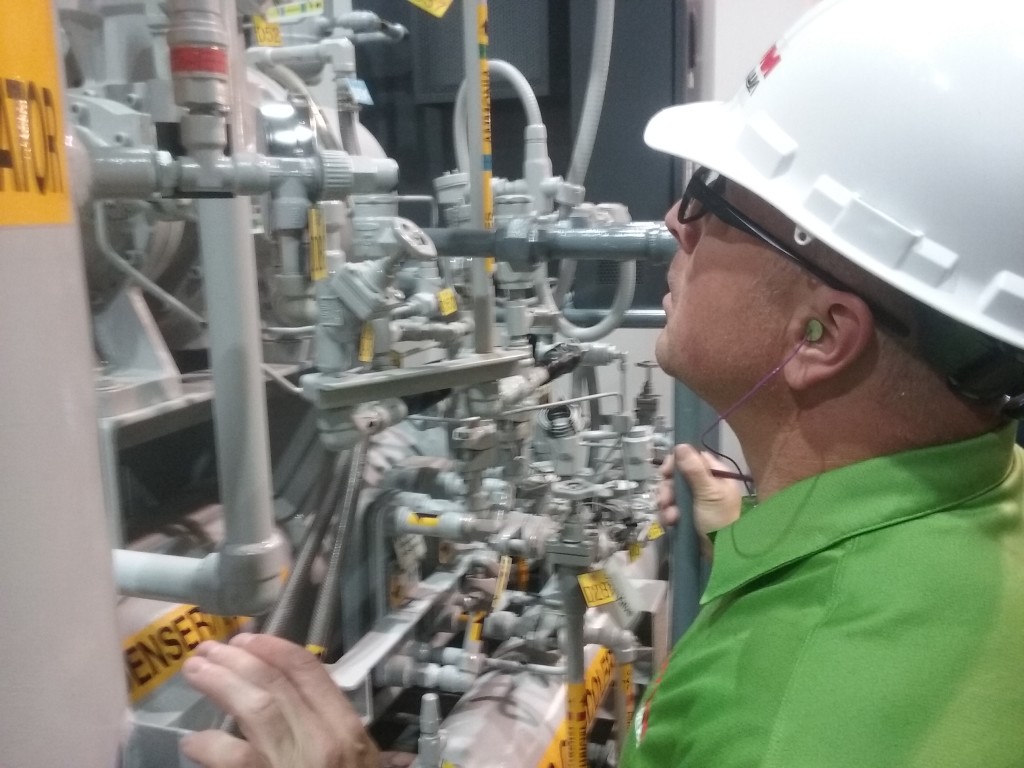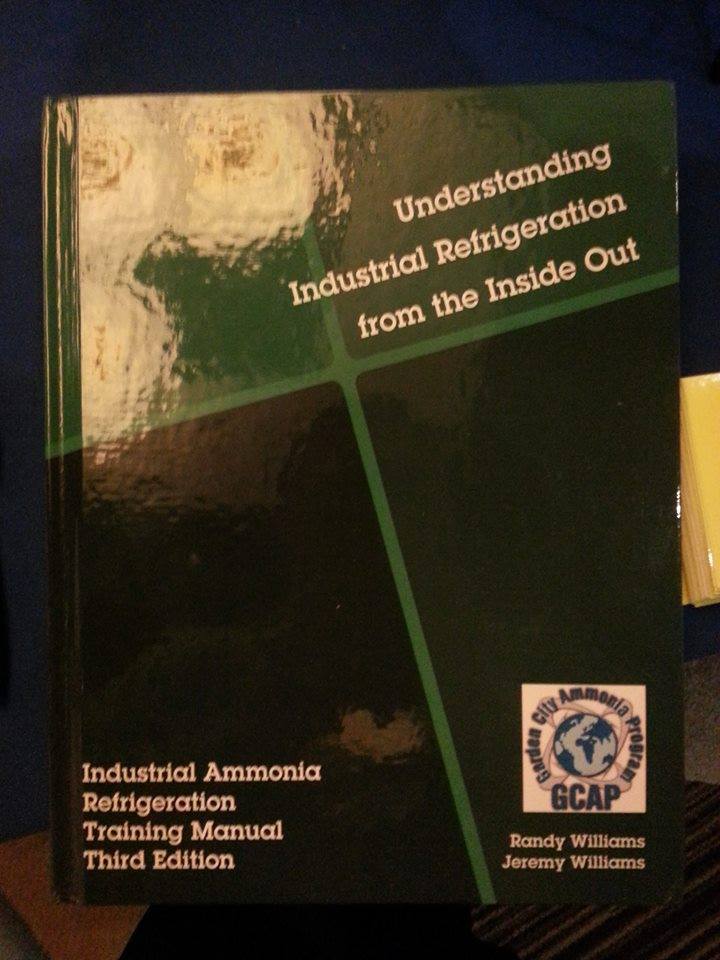CO2 Technician Course Competencies
GCAP’s CO2 Technician
Refrigeration Competencies
Prerequisite: Ammonia Operator I course and/or 2 years experienced industrial refrigeration background.
All of this material is covered or introduced to the
student at our seminar with running CO2/Cascade equipment in the lab.
Students will sit for a final certification exam
CO2 Safety
- MSDS
- CO2 Latent Heat of fusion Video
- Sub-Critical
- Trans-Critical
- Hydrostatic Expansion
- Pressure
- Sublimation
- Pressure Drop
- Relief Valves
- Relief Valve Headers
- Charging CO2 Systems
- CO2 Detection
- Ventilation
Understanding Industrial Refrigeration from the Inside Out
June 2, 2014 GCAP revealed their new Ammonia Operator I Book titled “Understanding Industrial Refrigeration from the Inside Out“. Authors Randy Williams, and Jeremy Williams
This is a 14 Chapter text of what an operator/technician needs to knows learning how to the see the refrigeration from the inside out. The book has been copyrighted, and filed with the Library of Congress for a specific ISBN number. If you have taken GCAP PSM/RMP course and seen the quality of that book, this will be of equal. For a full detailed outline of the book Click Here.
-
Chapter 1: Getting Started
-
Chapter 2: Process Safety Management
-
Chapter 3: What You Need To Know About Ammonia
-
Chapter 4: Basic Electricity
-
Chapter 5: Foundation
-
Chapter 6: Heat Transfer
-
Chapter 7: Seeing Refrigeration From The Inside Out
-
Chapter 8: Four Steps Of Refrigeration
-
Chapter 9: Liquid Feeds
-
Chapter 10: Compressor Applications
-
Chapter 11: Condensers
-
Chapter 12: Different Systems
-
Chapter 13: Practice Exam
-
Chapter 14: Common Acronyms and Definitions
Module 1 Thermodynamic Topics
- The role of the throttling valve on transcritical cycle
- Methods for improving the energy efficiency of carbon dioxide transcritical Cycles
Module 2 Industrial Systems
- General system design – limits and possibilities
- Pressure
- System types
- Compressor size and efficiency
- Pressure loss and size of piping
- Evaporators
- Defrosting
- Cascade coolers
- Determination of the cascade temperature
- Standstill cooling
- Power drop-out and emergency stop
- Pumps
- Alternative to centrifugal pumps
- The thermal pump system
- Energy Consumption of thermal pumping systems
- Pollution with R717
- Pollution with water
- Increased suction pressure during pull down or batch processes
- Industrial CO2 Refrigeration system
- CO2/R717 cascade system
- High Temperature stage: the R717 system
- Low Temperature stage: the CO2 system
- CO2 Compressor
- Control
- Cascade cooler
- Expansion valve, high pressure control and high pressure receiver
- Pump Separator
- Suction Line
- Hot gas defrost mode, gas generator and hot gas bypass
- Valves
- Leaks
- Moisture
- Operation at off-design conditions
- Liquid drain at hot gas defrost
- Ice-cream freezer
- Plate Freezer
- Transcritical plant design: Applied from supermarket refrigeration
- Type of system
- High pressure compressor
- Gas cooler
- High temperature heat exchanger
- High temperature expansion valve
- Separator/Receiver
- Gas bypass valve
- Evaporators and expansion valves
- Low temperature heat exchangers
- Low pressure compressor
- Oil return system
- Silencing
- Large Transcritical Systems
Module 3: Commercial Refrigeration
- Introduction
- CO2 system solutions in supermarket refrigeration
- Computer modeling simulations
- Laboratory experimental evaluations
- Field Measurements
- Safety issues related to CO2 in supermarket refrigeration
Module 4: CO2/R744 Mobile Air-Conditioning
Module 5: CO2 Heat Pumps
- Introduction
- Thermodynamic Efficiency
- Energy Efficiency for the CO2 Heat Pump
- Heat Pump Water Heaters
- Integrated Systems
- Space Heating and Cooling
- Heat Pump Dryers
Module 6: Safety and Leakages Control
- The importance of Guidelines
- Application of protection devices
- Leakage control detector
Module 7: Drivers for Implementation of CO2 Technology
Module 8: Components
- Compressors
- Compressor Available on the market
- Reciprocating compressors
- Rotary compressors
- Automotive compressors
- Lubricants for CO2 Compressors
- Heat Exchangers
- Finned tube heat exchangers
- Basic heat transfer characteristic air side
- Fundamentals on combined heat and mass transfer in wet surface air coolers
- Finned tube heat exchangers using round tubes
- Enhancement techniques
- Finned tube heat exchanger using flat tubes with internal Minichannels
- Plate Heat exchangers
- Tube-in-tube heat exchangers
- Special heat exchangers
- Shell and plate heat exchangers
- Heat exchangers for tap water
- Prediction of pressure drop and heat transfer of carbon dioxide inside channels
- Carbon dioxide thermo physical properties
- In tube heat exchanger
- Carbon dioxide pressure drop during flow
- Heat Exchanger design
Garden City Ammonia Program
2405 E. Fulton Plaza
Garden City , KS 67846
620-271-0037
620-271-0484 FAX
ammonia@pld.com
www.AmmoniaTraining.com
www.BoilerLicense.com
www.GcapCoolCast.com


